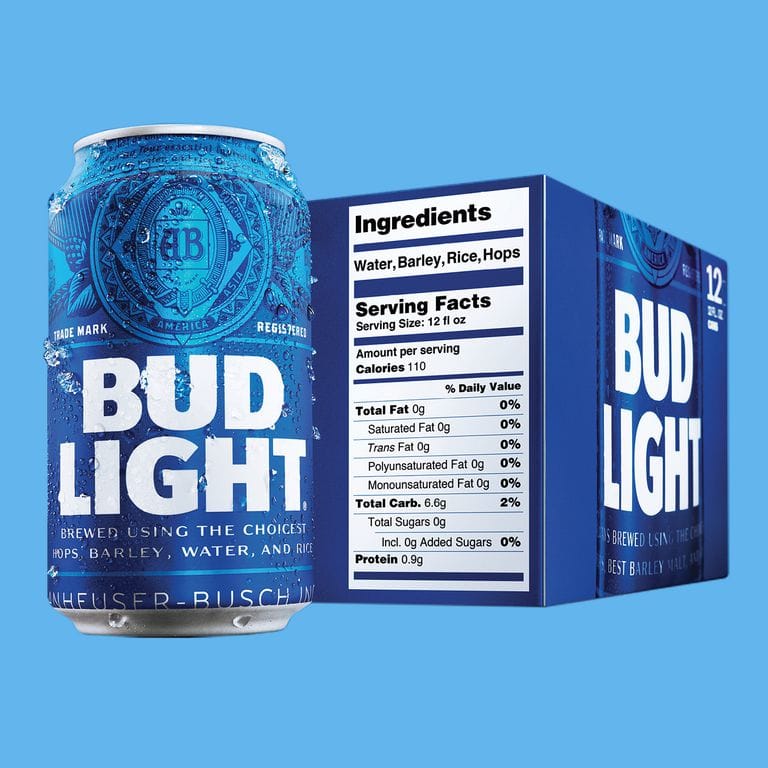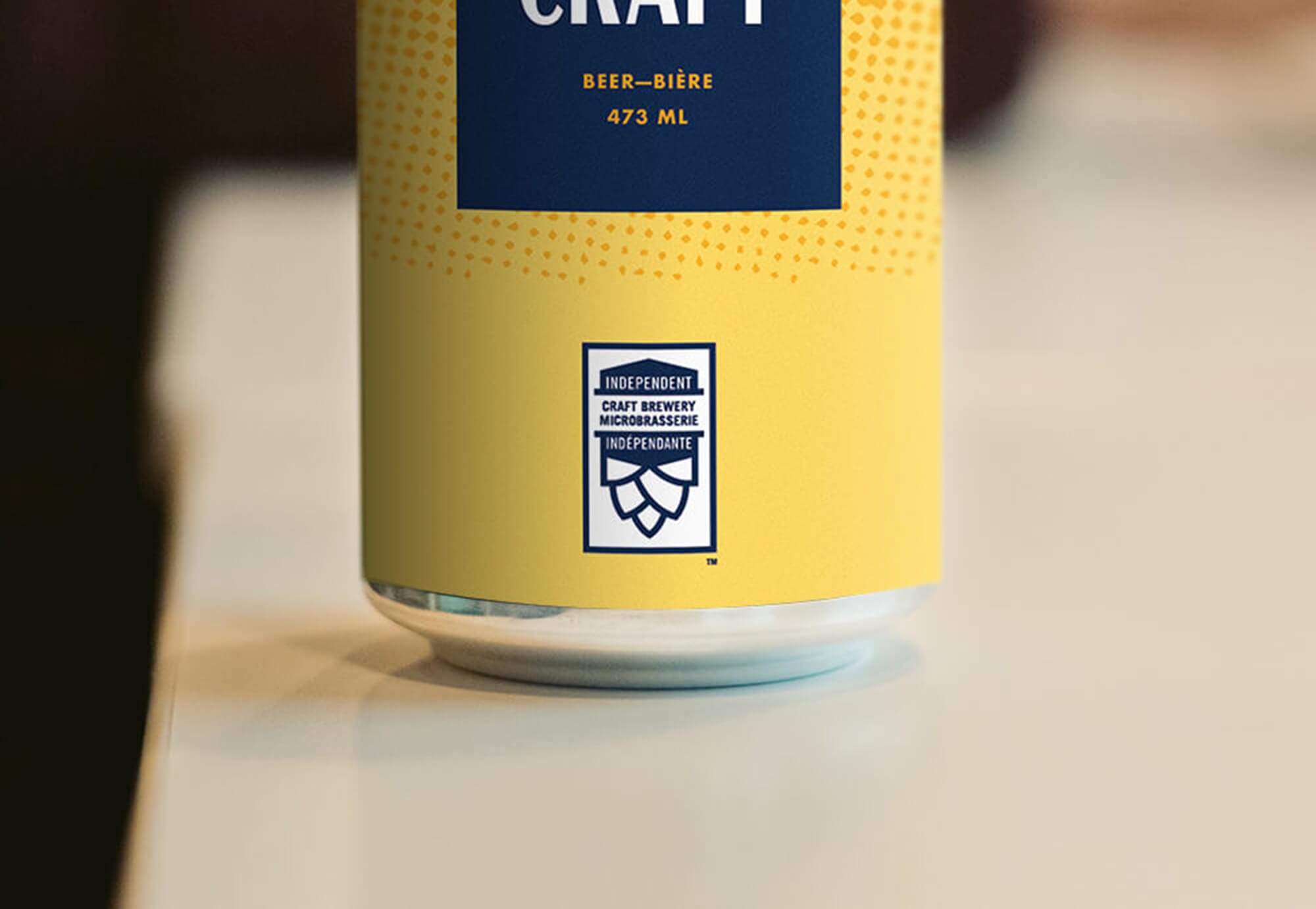
This story originally appeared in the Fall 2019 issue of The Growler, out now! You can find B.C.’s favourite craft beer guide at your local brewery, select private liquor stores, and on newsstands across the province.
The information contained on beer labels is a-changing. And is that Big Beer I see leading the charge?!
In February, Bud Light began labelling its beer boxes with nutrition charts and ingredient lists. They’re not the first to list nutritional information, some of the other big guys were already doing that. But Bud Light went a step further and began listing ingredients as well.
There are no rules compelling beer makers to list ingredients and nutritional information in the U.S. or Canada. So why would Big Beer go for it? It’s not like they’re known for altruism! Ah, it’s because they think millennials want transparency around what’s in their beer, and Big Beer needs to woo drinkers lost to craft beer and spirits. Are ingredient lists and nutrition information enough? I doubt it. But I sure would like to see more of this delightful concept of transparency in beer labelling.
What do we want? Transparency! When do we want it? Dec. 14, 2022!
Wait! What?
Canada introduced some new beer regulations in April, but they won’t be enforced until Dec. 14, 2022. While beer will continue to be exempt from the requirement to show a list of ingredients, the new beer standard requires beer to be labelled with a warning if it contains food allergens, sulphites and/or gluten. Huzzah! The new rules also specify that beers need to state if flavouring is used. Using a “flavouring preparation” will trigger an additional requirement for a mandatory declaration as part of the common name on the label (e.g. “beer with blueberry flavour”).
I’m all for the new standard. It codifies what craft brewers are already doing—innovating with herbs, spices and fruit juices, and using bacteria as a fermenter—and gives consumers more information about what’s in their beer. Much as I like it, though, I want more!
I’m not talking about those official black and white charts—Bud Light’s shows how little useful information those would contain. I would prefer a beer label tell me which hops and malts were used, the International Bittering Units (IBUs), whether it’s a kettle sour or barrel aged, and (sigh) how many calories it contains. I won’t die without any of this information, but it does help inform my decision of which beer to choose from the myriad of options. To the breweries including this information already—I say a heartfelt thank you!

I would appreciate a best before date, too. Big Beer is on-side for this one—they’ve pledged freshness dates on labels by 2020.
Now, don’t go getting all worried—this isn’t going to be a pro-Big Beer column! Craft beer leaves Big Beer in the dust when we get to my final, and biggest wish list item—a mandatory declaration of where and by whom the beer is brewed.
Currently, a Canadian beer label need only include: alcohol content by volume, the name of the product, company name and address, country of origin and its life span if it is less than 90 days. And all that must be in French and English, in a font no less than 1.6mm tall.
Yes, there is a name and address requirement. But that’s for the manufacturer’s name and address, not for who actually brewed the beer, and where. The B.C. Craft Brewers Guild has been working with government to review the Canada Food Inspection Agency Regulations, with an eye to moving the requirement away from the manufacturer’s address to stating where it was brewed. They want to see, for example: Goose Island Beer Company, brewed at Labatt Brewing Company Limited, 2505 Rue Senkus, Montreal QC H8N 2X8.
I salute this effort to improve transparency. If they could get the final piece of the who-brewed-this puzzle included as well, by indicating that Labatts is owned by AB-InBev, I could die happy. Many, many years (and beers) from now.
The newly formed Canadian Craft Beer Association is stepping into the fray; aiming to roll out a voluntary national seal later this year. In order to use the seal, a brewery must be locally owned and operated. CCBA’s website proudly proclaims that “The Independent Craft Seal is a seal of authenticity that indicates the beer you’re drinking has been developed and produced by a small, independent Canadian craft brewer.” If it bears the seal, you’ll know it is craft, not crafty.

I had great hopes that our naming rules would also help to distinguish independently brewed beer from shadow brands. If a manufacturing licence is required to use the word “brewery” in a business name, and only brick-and-mortar businesses (i.e. actual breweries) can get a manufacturing license—imposters would be outed by their name alone. Alas, subsidiary beer companies are permitted to use the word “brewery” on beers brewed by their parent company. And most breweries in B.C. prefer using the word “brewing” anyway—in a recent blog post Hired Guns Creative showed that only 10 per cent of breweries use “brewery” as their descriptive element, while a whopping 72 per cent went with “brewing.”
Valiant steps are being taken by craft beer organizations toward transparency. In the meantime, please send your thoughts and prayers for that glorious day, when who brewed a beer will be stated clearly and proudly, right there on the beer itself—in a font large enough to read, of course.
- The Fall 2019 issue of The Growler is out now! You can find B.C.’s favourite craft beer guide at your local brewery, select private liquor stores, and on newsstands across the province.




